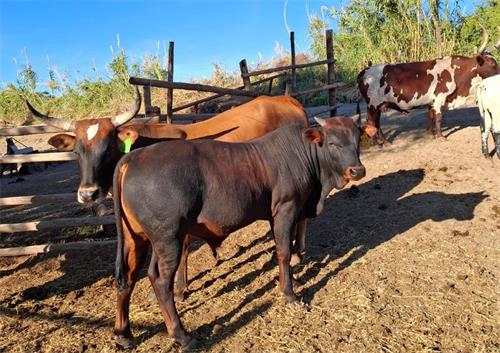Hey there! If you’re working with livestock—beef cattle, pigs, sheep, you name it—you already know how much we wish this job came with a crystal ball. We’re always trying to predict growth, fat coverage, muscle quality, overall health. These days, a compact, portable ultrasound device is basically our modern-day oracle. Let me walk you through how I, as someone who spends my days in the barn rather than a sterile lab, make use of it—and how it might change the game for you too.

Why a portable ultrasound feels like magic
Think about how massive veterinary equipment used to be, stuck in clinics or bulky trailers. Now imagine a handheld unit that fits in your backpack. You grab it, scan that calf or piglet right in its pen, and get actual images of muscle layers, fat thickness, maybe even marbling. You’re not guessing when a steer is ready to near finishing—you’re seeing it.
What gets me is how this tool speaks the language of growth. Instead of calling a vet or waiting days for lab results, you’ve got real-time feedback. Want to know if that young Angus is packing on muscle or just biding time? Scan it. Curious whether your finishing ration is finally kicking in? Scan again the next week. No stress, no sedation, no guesswork.
Spotting muscle growth vs. fat gain
Let’s say you’ve got a calf in the post-puberty, pre-mature stretch—kind of that sweet zone where muscle growth is still fast but fat hasn’t ramped up yet. With a quick scan of the Longissimus dorsi (at the loin or between ribs), you can watch that eye muscle area expanding week by week. If it’s still climbing nicely, maybe you keep feeding that lean, protein-rich mix. If it’s topped out, you pivot to energy-dense finishing. That switch can save feed costs and boost quality.
Then as the curve shifts—growth slows, fat starts filling in—that’s your sign to start planning market timing. No over-finishing, no missing the prime window.
Tissue growth, in order
If you recall your bio classes, tissues form in that sequence—nerves first, then bones, then muscle, and lastly fat. Doesn’t matter if you’ve got a high-grain diet or a pasture starter—muscle always follows bones, then fat. When you scan and see minimal change in muscle but increasing subcutaneous layers, you’ve hit that fat-deposition stage. Time to think finishing, not bulk muscle gain.
Day-to-day benefits I see
-
Zero harm to animals – No sedation, no needle, no fuss. They barely register it.
-
Real numbers, real decisions – Muscle depth, fat thickness, eye muscle area—actual metrics, not gut feel.
-
Act on the fly – Scan, review, adjust feed or culling decisions in an afternoon.
-
Better meat, better returns – Hit the market when the animal’s right, not too lean, not too fatty.
What you typically measure
-
Eye Muscle Area (EMA) – bigger means more bulk, better yield.
-
Sc fat thickness – usually around the ribs or rump, tells you if finishing is close.
-
Intramuscular marbling – some gadgets can hint at this—awesome for quality grading.
-
Layer comparisons – tracking changes over time to map progression.
How breed and nutrition play in
Talking genetics and feed, early-maturing breeds like Angus will show that muscle-gain bump earlier, while late-maturing ones (Charolais, here’s looking at you) keep building lean for longer. High-protein early feed kicks that muscle development off fast, then later a calorie-rich finish brings in fat and marbling. With the ultrasound, you act on each stage precisely.
The power of portability
Clipped-on battery, probe warmed up in a few seconds, images pop on a tablet. I can move from pen to pasture, compare animals instantly, even show images to staff or buyers on the spot. No paperwork, no delays. Results speak for themselves.
What I’d tell another farmer
If you haven’t tried one, borrow or demo a portable ultrasound next time you’re gathering animals. Just a few scans can change your decisions on feeding, grouping, marketing timing. And it doesn’t feel like cold tech—it’s just part of the routine, like tossing hay or checking water troughs.
Great animals deserve great tools, and this one’s a silent helper that fits right into the arm-reach of daily life in the barn.